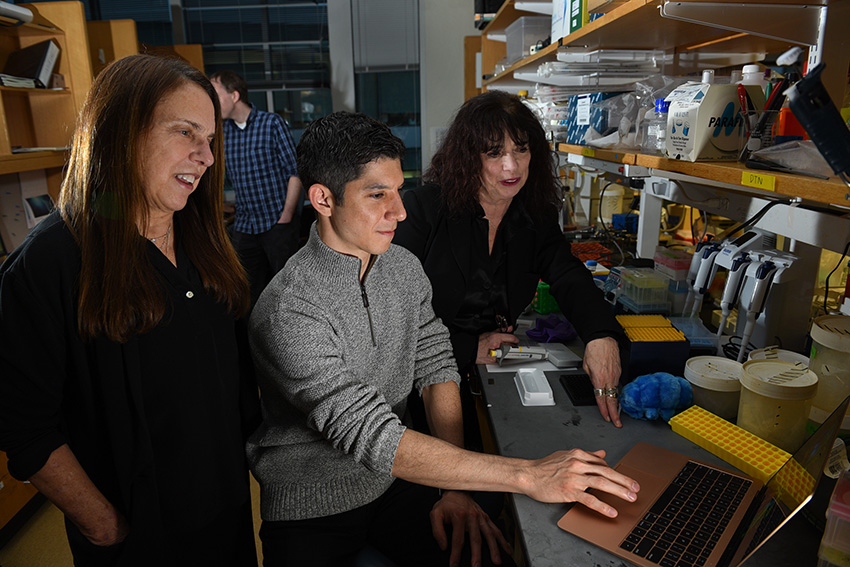
iStock/Eraxion
Water bear. Moss piglet. Tardigrade.
The gentle teddy-bear features of this polyonymic animal belie its hardy nature.
Capable of withstanding dehydration and cosmic radiation and surviving temperatures as low as -450 F and as high as 300 F, this eight-limbed microscopic creature holds the key to one of biology’s greatest secrets—extreme survival.
Tardigrades have captivated the imagination of astrobiologists—several of the clan’s members have traveled to space as part of research experiments—and tantalized the fantasies of sci-fi fans as a giant alien creature in Star Trek: Discovery.
Now scientists at Harvard Medical School are wondering: Can the physiology of this extremophile yield insights that can be applied to humans?
Inspired by nature, optimized in the lab
The HMS group, working with colleagues at the University of Washington, Seattle, and MIT, are hoping to answer this very question in an ambitious new project aimed at deciphering the structure and function of several tardigrade proteins suspected to play a role in the organism’s resilience, and then use these proteins as the basis for human therapies that halt tissue damage and prevent cell death.
The team’s goal is to engineer an optimized version of these proteins and use them to slow down metabolic activity in injured cells—the biological equivalent of hitting the pause button on cellular processes, including damage-causing inflammation, infection and, ultimately, cell demise.
The team’s ultimate goal is to develop a protein-based therapy that can halt tissue damage in traumatic injuries, heart attacks, strokes and sepsis, among other conditions.
“It really started out as a wacky, high-risk idea,” said Pamela Silver, the project’s principal co-investigator and professor of systems biology in the Blavatnik Institute at HMS and member of the Harvard Wyss Institute at Harvard.
In the spring of 2018, Silver came across a grant challenge posted by the U.S. military seeking novel solutions to stabilizing traumatic injuries in combat zones. She knew just whose brain to pick.
Roger Chang, a bioinformatician and molecular biologist in Silver’s lab, has long been fascinated with protein resistance, studying, among other things, the role of proteins in thermal stress and shielding bacterial cells from gamma radiation. Not long ago, Chang had seen a study showing that when tardigrade proteins are introduced in E.coli and yeast, they render the organisms unusually tolerant to desiccation.
What if these processes could be replicated in human cells, Chang wondered. The wild-type tardigrade protein showed only modest protective effect in E.coli and yeast, but what if these proteins could be made more potent in the lab, Chang asked.
“I started conceiving how we could improve upon nature’s ‘raw’ materials and functionalize them for human use,” Chang said.
The beauty of disorder
What allows tardigrades to survive in conditions that would kill most other organisms? The precise mechanisms behind their ability to undergo self-preserving cryptobiosis remain poorly understood. However, evidence suggests that when it undergoes this process, it deploys a series of biochemicals—including proteins and sugar molecules—that shield nucleic acids and proteins inside cells from damage.
The proteins in question belong to a class known as intrinsically disordered proteins (IDPs). IDPs’ most striking feature—which gives the class its name—is the lack of neat, orderly structure that is easily visualized in 3D imaging studies.
Tardigrades are, by no means, the only animals exhibiting the presence of IDPs. These proteins are nearly ubiquitous across species, including humans. Nor are tardigrades the only organisms capable of surviving extreme stress. Other known extremophiles include certain nematodes, brine shrimp and the poetically named resurrection plant, which can survive dehydration for years and bloom back into life within mere hours of being watered.
Biologists have been aware of the existence of disordered proteins for decades but long dismissed them as inconsequential. IDPs are so poorly understood that there is still no clear consensus on what constitutes one. In fact, for the most part, their functions remain unknown. What scientists do know is that not all disordered proteins are capable of slowing down cellular activity. Mapping out their structure remains a fundamental problem—a challenge that leaves scientists wondering which among these proteins are truly disordered and which ones are simply not amenable to current structure-mapping techniques.
Designing any protein is a formidable challenge—not unlike designing a car. Designing a disordered protein is akin to creating the blueprint for an aircraft.
Silver and Chang knew it was time to call on Debora Marks, a mathematician and computational biologist in the Blavatnik Institute at HMS with a keen interest in IDPs and expertise in predictive computer modeling.
It would be a daunting task. Yet, combining Silver’s expertise in synthetic biology with Marks’ prowess in machine learning and computation would put this within the realm of the possible.




